When we last left off in the movie, a presenting cell scavenged our body for things that are not usually present, and grabbed that substance to show a helper T cell a receptor (the signal) on its surface (Lower right corner of frame 1, small plum-colored cell). The helper T cell understands that signal to mean that something bad is in the body, and then communicates with a B cell (frame 2, orange cell), coaxing it to start dividing by releasing cytokines (frames 3 and 4).
There's a lot of terminology and lots of players involved in an allergic reaction. So if you're wondering why (like I was in those very uncomfortable 24 hours following my hives/rash reaction) your medication takes a while to calm down your swelling, itching, and general misery, remember that all these players need to be calmed down as well!

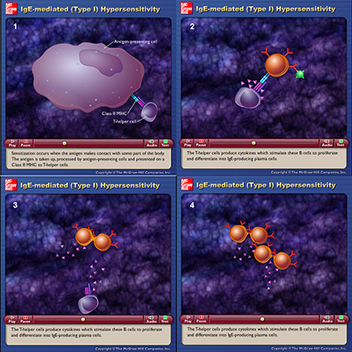
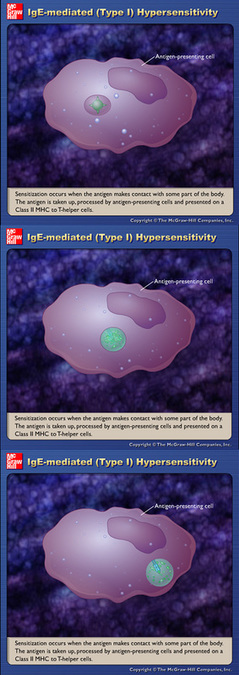
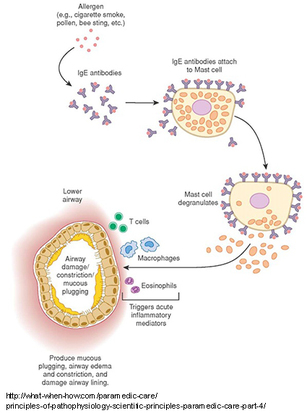
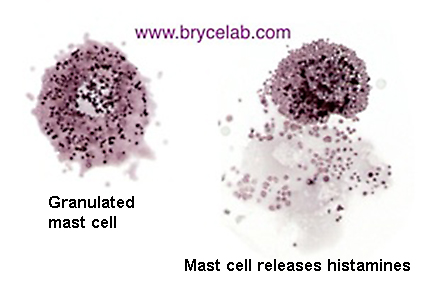
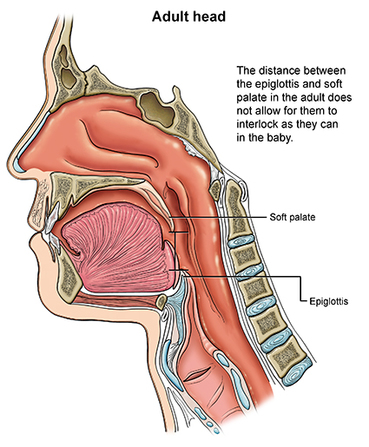
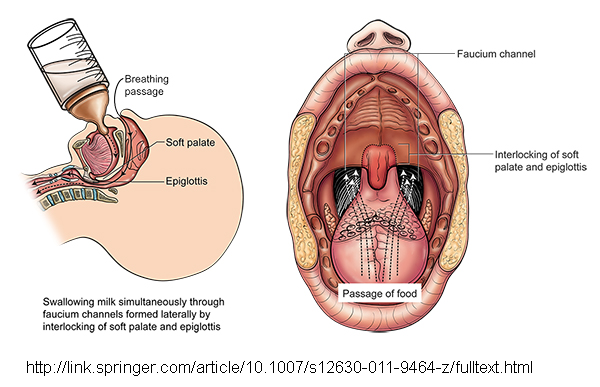
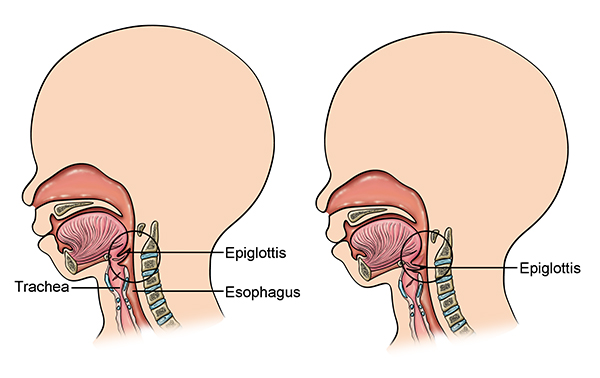
 RSS Feed
RSS Feed
